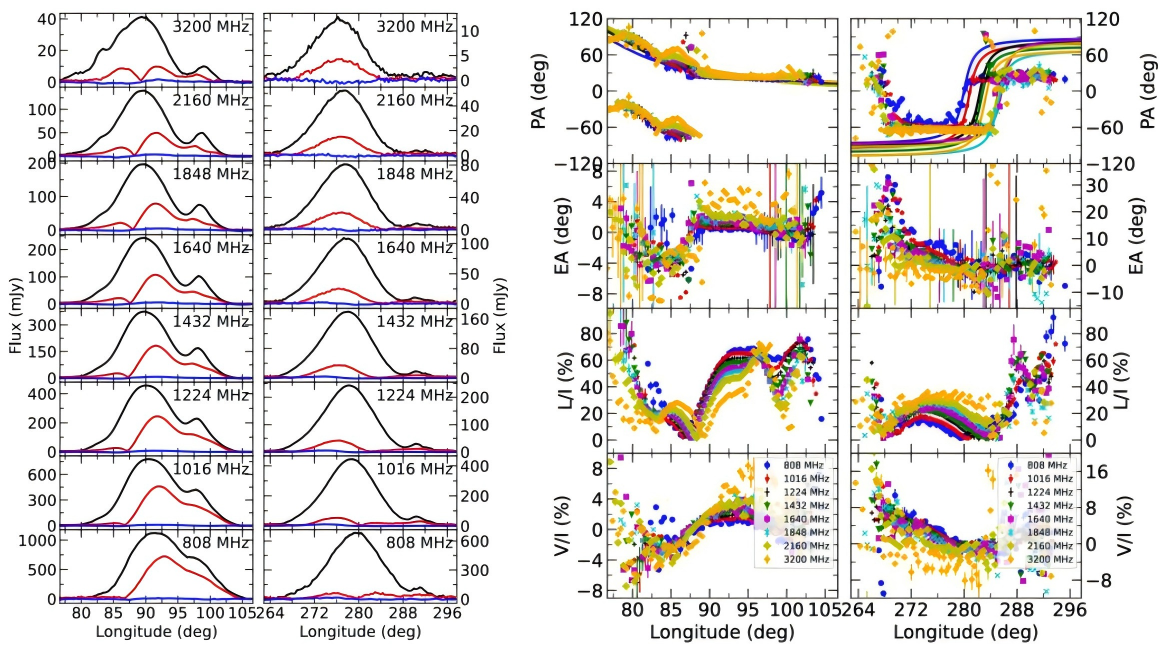

Decoding the Spectrum of a Cosmic “Lighthouse”: Researchers Unravel the Polarization Mystery of a Millisecond Pulsar
In the direction of the constellation Vulpecula within our Milky Way galaxy, a cosmic “lighthouse” named PSR B1937+21 spins at an astonishing rate of 642 revolutions per second, emitting electromagnetic pulses rivalling the precision of atomic clocks.
Recently, Ph.D. student WANG Zhen from the pulsar research group of Xinjiang Astronomical Observatory (XAO), Chinese Academy of Sciences (CAS), under the guidance of his supervisors, Prof. YUAN Jianping and Prof. WEN Zhigang, utilized the Murriyang (Parkes) 64-meter radio telescope in Australia equipped with an ultra-wideband receiver. For the first time, they captured the complete polarization pattern of this millisecond pulsar's main pulse and interpulse as they vary with frequency.
Through three years of sustained observations, the researchers unveiled the radiation secrets of PSR B1937+21: the linear polarization degree of the main pulse decreases as frequency increases, while the interpulse shows the opposite trend; the circular polarization degree of both emission regions strengthens with rising frequency; and the main-to-interpulse intensity ratio follows a power-law spectrum with an index of 0.52±0.02. These findings, published in The Astrophysical Journa. provide crucial evidence for radiation mechanisms operating under extreme physical conditions.
Discovered in 1982 as one of the first millisecond pulsars, PSR B1937+21 possesses an ultra-short rotation period of 1.558 milliseconds. Its magnetic field strength is merely one ten-thousandth that of ordinary pulsars, suggesting possible spin-up via accretion from a companion star. The study employed an ultra-wideband receiving system covering 704-4032 MHz. Integrating three years of data enhanced the signal-to-noise ratio by a factor of 20. Furthermore, flux density measurements, dispersion measure (DM) analysis, and Faraday rotation measurements were used to infer properties of the intervening interstellar medium.
The results confirmed that the emission height decreases as frequency increases (manifesting as pulse width narrowing) and suggest that the main pulse and interpulse likely originate from different regions within the magnetosphere. This provides observational support for the "relativistic beaming model."
These findings will advance the research into neutron star magnetospheric physics and plasma radiation mechanisms, while also offering more precise timing references for gravitational wave detection.

Figure: Frequency evolution of the polarization pulse profile of the millisecond pulsar PSR B1937+21.
Attachment Download: